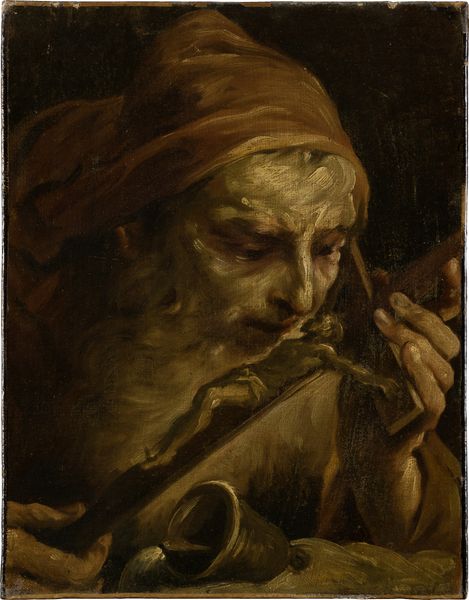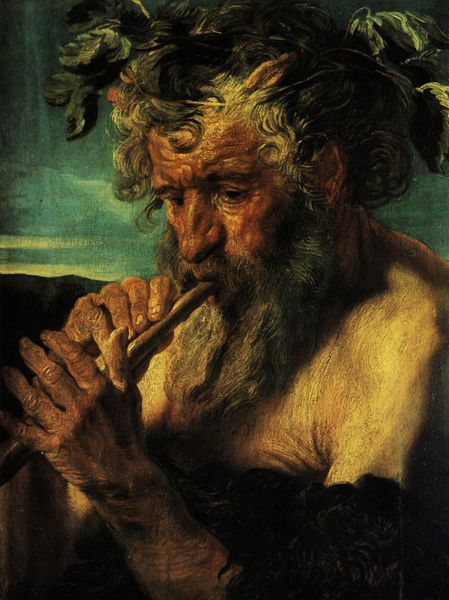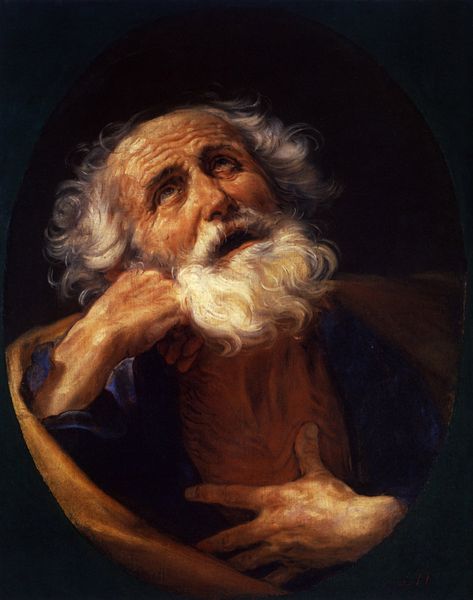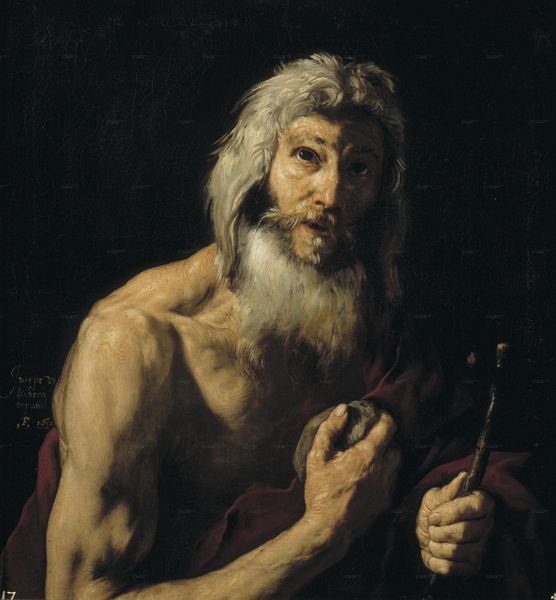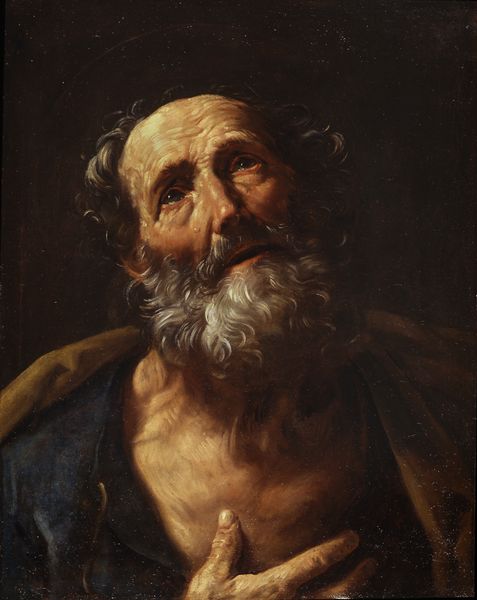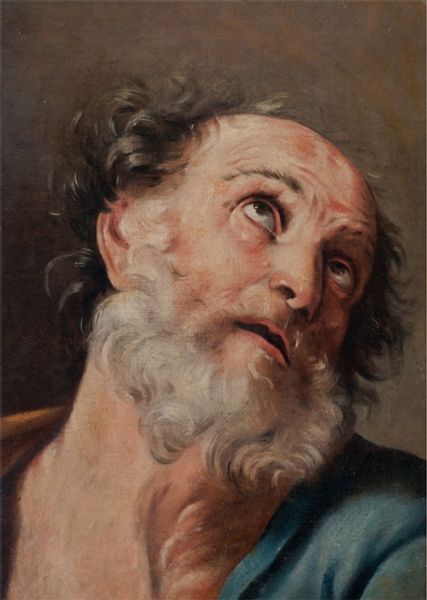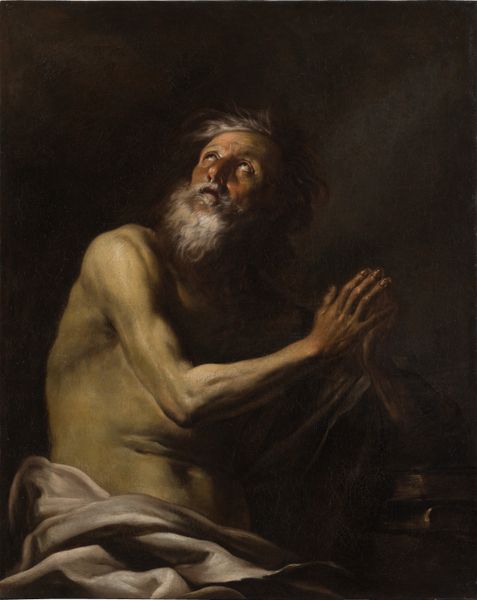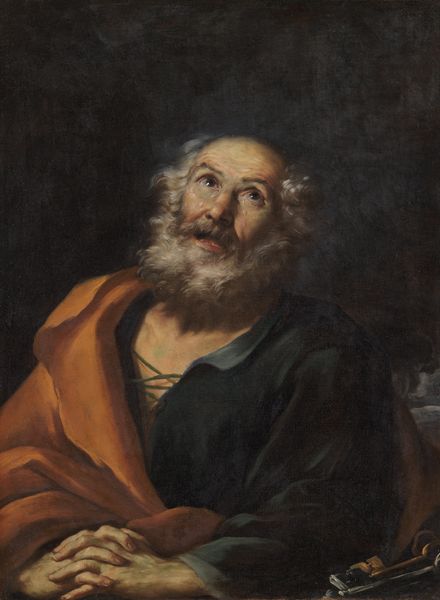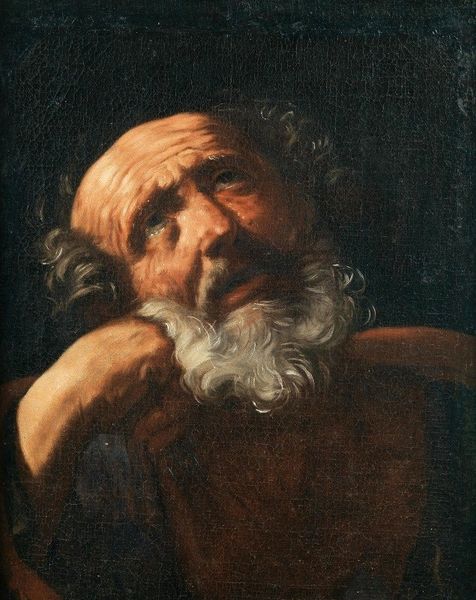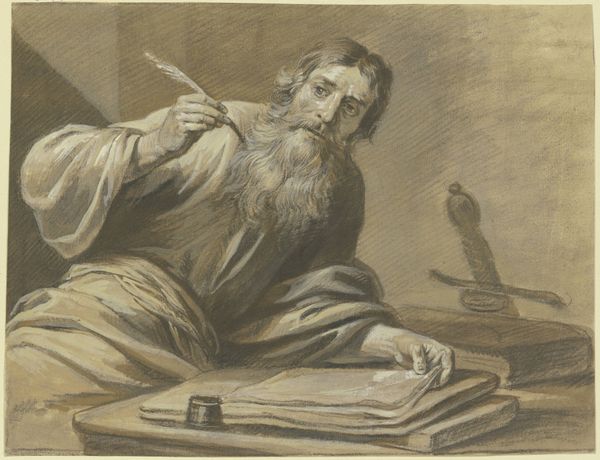
oil-paint
#
portrait
#
baroque
#
oil-paint
#
oil painting
#
history-painting
Copyright: Public domain
Editor: Here we have "An Apostle," an oil painting presumably from the Baroque period, possibly by Giovanni Battista Gaulli. The figure’s intense gaze upwards and clasped hands create a strong sense of supplication, or perhaps, desperation. What does this portrait evoke for you? Curator: Gaulli's Apostle speaks volumes about the sociopolitical power dynamics embedded within religious art of the Baroque era. His upturned gaze doesn't just signify prayer; it represents the subject's reliance on a divine power structure, reinforcing societal hierarchies of the time. Who benefitted from disseminating that imagery, do you think? Editor: So you're saying it's more about societal control than personal devotion? I thought Baroque art was intended to inspire awe and religious fervor? Curator: Precisely, and how is that "awe" generated, and to what end? Notice the use of light and shadow – typical of Baroque techniques, heightening the emotional impact. Yet this emotional manipulation was often deployed to persuade and subjugate its audience. How might this depiction affect someone experiencing disenfranchisement or oppression? Editor: It makes them believe in something beyond earthly troubles, maybe? Or it could further highlight their powerlessness… Curator: Exactly! Gaulli’s skill isn't just artistic; it's a mastery of ideological representation. Considering the history-painting style that's indicated by metadata, where would this fit, how does it re-imagine history? Editor: It gives a more human perspective to the figures usually depicted in a highly glorious way, so it allows a point of connection between us as normal people to the glorified religious history. Curator: That's a compelling point. It shows that, by analyzing its visual and historical context, we can expose the intricate threads of power, identity, and belief woven within religious portraiture. I really see now that portraiture goes beyond capturing individual likeness. Editor: Yes, definitely an eye-opening experience! I understand better that portraits in religious art aren't neutral, or naive depictions; they are powerful tools in the construction and reinforcement of belief systems.
Comments
No comments
Be the first to comment and join the conversation on the ultimate creative platform.
